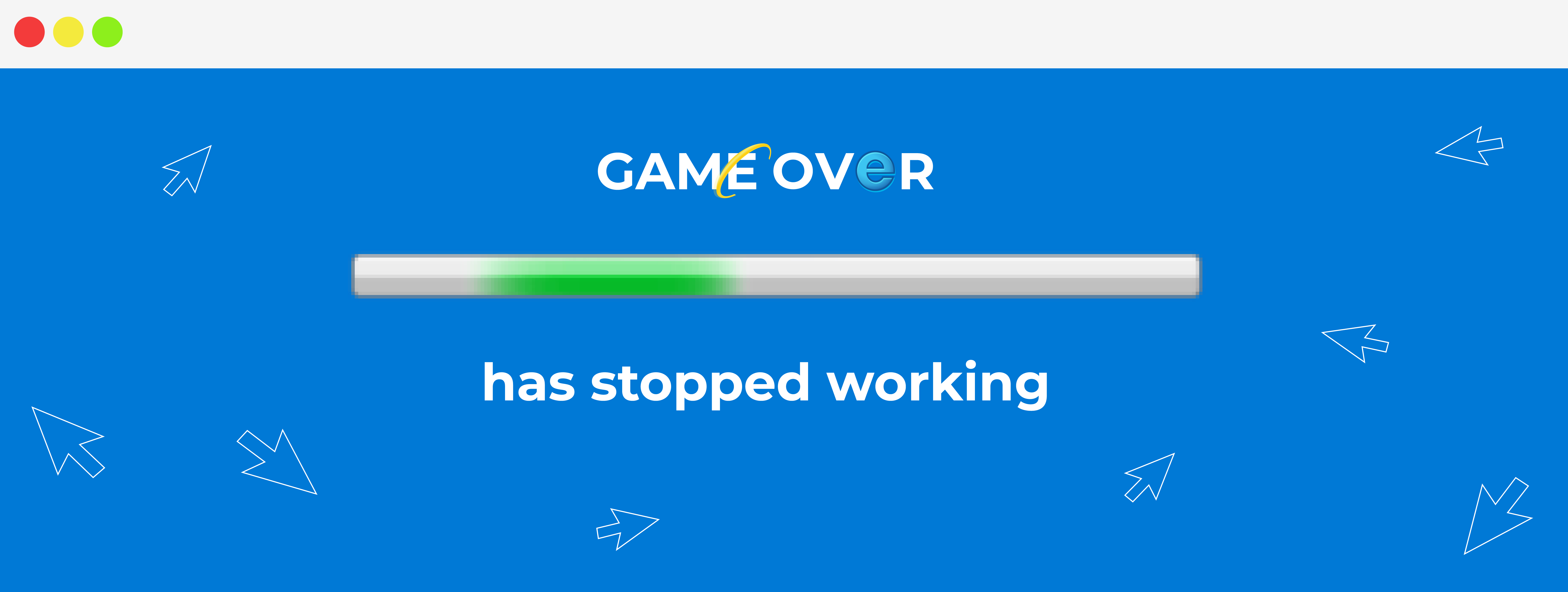
It’s time to move on
Developed and released in 1995, Internet Explorer (IE) was the web browser of choice for almost a decade. It hit its peak in 2003 when 95% of the market was browsing on IE.
But IE’s popularity slowly declined, losing a lot of users to Google Chrome and Firefox. To compete, Microsoft replaced the once-popular product with a more modern browsing experience, named Microsoft Edge, three years ago.
While Edge is certainly an improvement, it’s failed to keep up with the competition. Microsoft has now moved to power its new browser using Chromium open-source code – leading to a more certain end of life for Internet Explorer.
The end is near – 3 reasons to avoid Internet Explorer
As developers, we strongly advise against building applications or websites optimised for IE. The browser is dead and you should stop wasting time optimising, develop and catering to those who are still using it. Here are three reasons why.
1. Where did all the users go?
Most users have now moved on from IE – in September 2019 it accounted for less than 9% of all Australian browser activity, with this number tipped to plummet further by the end of 2019.
Today, Internet users want a simple and fast browsing experience. With its user-centric approach, Google Chrome has won the cursors of users with 66% of the Australia market share, followed (at a great distance) by Safari at 9.33% and Firefox is at 6.97%.
Thanks to the popularity of the iPhone, mobile browsing is a slightly different story, with Safari leading the way at just over 50%, and Chrome coming second at over 39%.
When developing an application or a website, a key thing to consider is where your users are and how they get to your site. And it’s pretty clear from the data that they’re not on IE.
2. The threat of security breaches is real
Microsoft stopped supporting older versions of IE (10 and older) in 2016, and currently, only IE 11 receives regular security updates.
Using an older browser version leaves you vulnerable to viruses, spyware and malicious software that could steal data or harm your organisation.
While Microsoft locked itself into supporting IE 11 until 2029, the rapid decline of users has caused speculation around the tech giant cutting the life of IE short. Which would mean even the latest version could leave you wide open to serious security issues.
3. Internet Explorer will cost you more
Enabling your website or web application’s compatibility with IE 11 (or older) requires extensive development. This means your development costs will be considerably higher.
Usually, the cost of developing applications for IE far outweighs the benefit, especially when only a select number of people use the browser.
But what about the last 5%?
If you suspect your supporters still use IE, here’s what you can do.
Check your website analytics to see how many visits are coming from IE browsers. In your Google Analytics, you can find this information under Audience> Technology > Browser & OS. We suggest looking at a date range of 12-24 months. Drill into what location they’re from and whether they are the audience you want to target.
For instance, if the majority of IE browser visits are from overseas, but you only provide services in Australia, then these visits probably don’t matter very much to your organisation’s success.
If you have some valuable traffic from IE, build a popup alerting your users that your site is not compatible and they should upgrade/change their browser for the best user experience.
Fun fact – some e-commerce sites charge a premium for IE users when they make a purchase.
Wrapping Up
The long and short of it is, IE will likely fade out of existence over the next couple of years, as users discover faster and better user experiences on other browsers. If you’re in the process of developing an app or a website, we strongly urge you not to go through the hassle and high cost of optimising it for Internet Explorer. If need some more information on this topic or assistance with Google Analytics, please get in touch.

